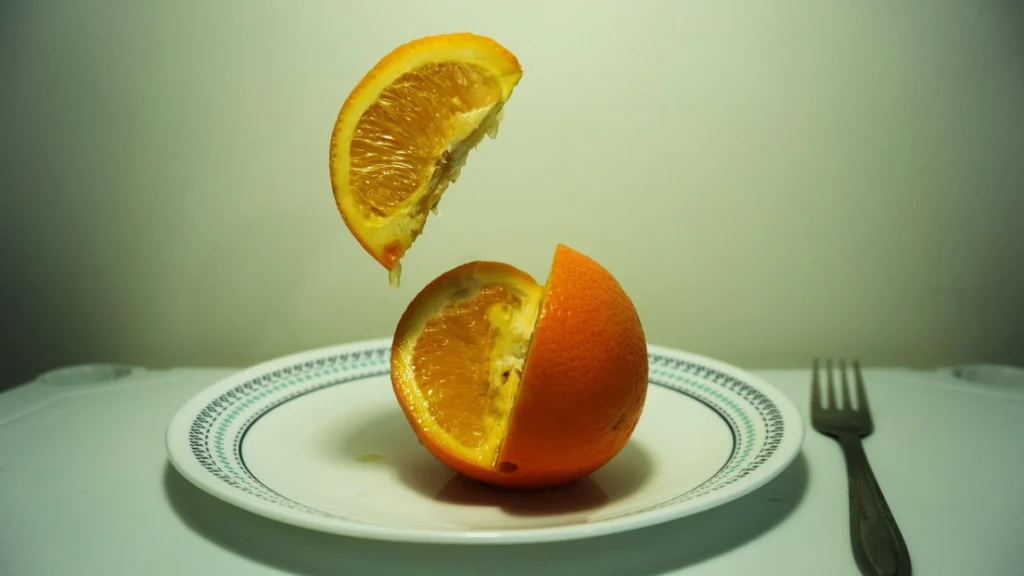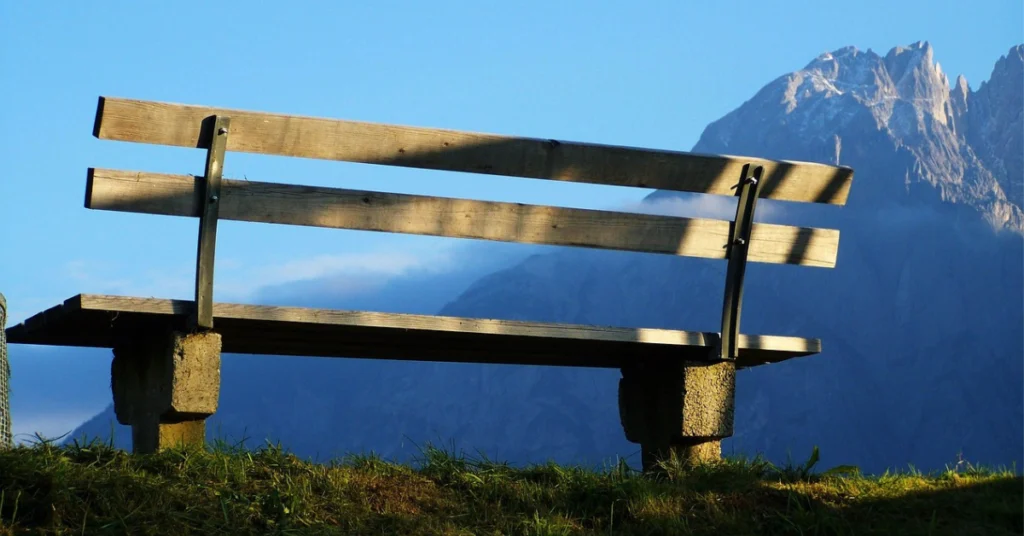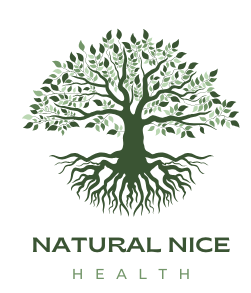Emotional Wellness and Creative Inspiration Ideas
Have you ever felt stuck, unable to tap into your inner source of creativity? You’re not alone. Many of us struggle to find creative inspiration when we’re feeling drained or overwhelmed. Emotional wellness plays a significant role in sparking creativity, and nurturing it can be a game-changer.
By prioritizing your emotional well-being, you can unlock new sources of creative inspiration ideas. This isn’t just about feeling better; it’s about tapping into your full potential and bringing your most innovative ideas to life.
Table of Contents
The Psychology Behind Creative Blocks
The psychology behind creative blocks plays a crucial role in shaping your original idea generation. Creative blocks can be a significant obstacle for individuals seeking to tap into their imaginative potential. Understanding the emotional and psychological factors that contribute to these blocks is essential for overcoming them and fostering a more productive creative process.
How Emotional States Affect Your Creative Process
Your emotional state has a profound impact on your ability to generate new ideas and approach creative tasks. When you’re under stress or experiencing negative emotions, your creative potential can be significantly diminished. Stress and anxiety can lead to a narrowed focus, making it more challenging to think outside the box and explore novel solutions. Conversely, a positive emotional state can enhance your creativity, allowing you to approach problems with a fresh perspective and devise unique creativity strategies.
Research has shown that emotional wellness is closely linked to creative performance. By managing your emotional state and developing effective coping mechanisms, you can create an environment that is conducive to imaginative thought starters and original idea generation.
| Emotional State | Impact on Creativity | Strategies for Improvement |
|---|---|---|
| Stress and Anxiety | Reduces creative potential, narrows focus | Mindfulness, relaxation techniques |
| Positive Emotions | Enhances creativity, broadens perspective | Gratitude practices, positive self-talk |
| Emotional Neutrality | Provides a stable foundation for creativity | Meditation, emotional regulation |
Identifying Your Personal Creative Obstacles
To overcome creative blocks, it’s essential to identify the personal obstacles that are hindering your creative process. This involves developing a deeper understanding of your emotional triggers and the factors that contribute to your creative blocks. Reflecting on your past experiences and the circumstances surrounding your creative blocks can provide valuable insights into the root causes of these obstacles.
By recognizing the patterns and triggers that lead to creative blocks, you can develop targeted strategies to overcome them. This might involve adopting new techniques for managing stress, cultivating a more positive mindset, or exploring different approaches to creative problem-solving.
Cultivating Emotional Wellness for Creativity
To unlock your full creative potential, it’s essential to cultivate emotional wellness. Emotional wellness directly impacts your ability to generate fresh creative sparks and maintain a consistent flow of inventive inspiration methods. By focusing on your emotional well-being, you can enhance your capacity for artistic brainstorming techniques and overall creative expression.
Mindfulness Practices to Clear Mental Space
Mindfulness is a powerful tool for clearing mental clutter and fostering a creative environment. Regular mindfulness practice can help you stay present and focused, reducing mental distractions and enhancing your ability to engage in creative activities. Simple mindfulness exercises include deep breathing, body scan meditation, and mindful walking.
By incorporating mindfulness into your daily routine, you can improve your mental clarity and create a fertile ground for creative ideas to emerge. This practice not only enhances your focus but also contributes to a more balanced emotional state, crucial for maintaining creative momentum.
Stress Management Techniques for Creative Thinkers
Effective stress management is vital for creative thinkers, as stress can significantly impede the creative process. Techniques such as progressive muscle relaxation, visualization, and journaling can help mitigate stress and promote emotional well-being. By managing stress, you can maintain a clearer mind and stay open to new ideas and perspectives.
| Stress Management Technique | Description | Benefit for Creativity |
|---|---|---|
| Progressive Muscle Relaxation | A technique involving the systematic tensing and relaxing of muscle groups. | Reduces physical tension, promoting relaxation and focus. |
| Visualization | A practice that involves imagining a peaceful or inspiring scenario. | Enhances mental clarity and inspires new ideas. |
| Journaling | The act of writing down thoughts, feelings, and reflections. | Helps process emotions and gain insights, fostering creativity. |
Building Emotional Resilience for Creative Risk-Taking
Emotional resilience is crucial for creative risk-taking, allowing you to navigate challenges and setbacks with confidence. Developing resilience involves cultivating a growth mindset, practicing self-compassion, and learning from failures. By building emotional resilience, you can embrace uncertainty and view challenges as opportunities for growth and creative exploration.
This resilience enables you to maintain your creative momentum even in the face of adversity, ensuring that you continue to produce innovative work and explore new artistic brainstorming techniques.
Setting the Stage for Creative Inspiration Ideas
Creating an environment that fosters creativity is crucial for sparking innovative ideas. Your workspace, whether it’s a dedicated studio or a corner of your home, plays a significant role in influencing your ability to generate imaginative thought starters and develop unique creativity strategies.
A well-designed environment can stimulate your senses and inspire you to think outside the box. Let’s explore how to optimize your space for maximum creativity.
Designing Your Optimal Creative Environment
Your creative environment should be tailored to your specific needs and preferences. This involves considering both physical and digital aspects.

Physical Space Considerations
When it comes to your physical workspace, factors such as lighting, comfort, and clutter control are crucial. Ensure your workspace is well-lit, preferably with natural light, and invest in a comfortable chair and desk. Keep your workspace organized to minimize distractions.
Digital Environment Organization
Just as important as your physical space is your digital environment. Organize your computer files and folders in a logical manner, and consider using productivity tools to help you stay focused. A clutter-free digital space can significantly enhance your ability to concentrate on creative tasks.
Sensory Stimulation Techniques
Sensory stimulation can be a powerful catalyst for creativity. By engaging your senses, you can stimulate your imagination and foster an environment conducive to innovative design concepts.
Using Music and Sound Effectively
Music and sound can significantly impact your creative process. Some people prefer complete silence, while others work better with background music or nature sounds. Experiment to find what works best for you.
Visual and Tactile Inspiration Sources
Surround yourself with visual and tactile elements that inspire you. This could include artwork, plants, or textured materials. These elements can serve as imaginative thought starters, helping to spark new ideas.
| Sensory Stimulation Technique | Example | Benefit |
|---|---|---|
| Music | Classical or instrumental tracks | Enhances focus and mood |
| Visual Elements | Artwork or inspirational quotes | Stimulates imagination |
| Tactile Elements | Textured materials or plants | Provides sensory variety |
Time Management for Creative Sessions
Effective time management is crucial for maintaining productivity during creative sessions. Techniques such as the Pomodoro Technique, which involves working in focused 25-minute increments followed by a 5-minute break, can be particularly effective.
By combining a well-designed environment with effective time management and sensory stimulation techniques, you can create a powerful setup for generating unique creativity strategies and fostering a continuous flow of innovative ideas.
Daily Creative Inspiration Ideas and Exercises
Daily rituals can significantly boost your creative output and original idea generation. By incorporating simple exercises into your daily routine, you can maintain a fresh flow of creative sparks and keep your inventive inspiration methods sharp.
To get started, let’s explore some effective daily practices that can help stimulate your creativity. These exercises are designed to be flexible and adaptable to your lifestyle, ensuring that you can maintain a consistent level of creative inspiration.
Morning Creativity Rituals to Jump-Start Your Day
Begin your day with a morning creativity ritual that sets a positive tone. This could be as simple as journaling, meditating, or engaging in a short creative activity. For example, you might spend 10 minutes drawing or writing a short story. The goal is to stimulate your mind and get your creative juices flowing.
- Free writing for 10 minutes
- Quick sketching or doodling
- Meditation with a creative focus
Artistic Cross-Training: Exploring New Mediums
Engage in artistic cross-training by exploring different creative mediums. If you’re a writer, try drawing or painting. If you’re a visual artist, consider writing a short story or composing music. This cross-training can help you discover new talents and inspire fresh ideas.
- Try a new art form or medium
- Experiment with different tools or software
- Combine multiple mediums for a mixed-media project
Five-Minute Creativity Boosters for Busy Days
On busy days, it’s essential to have quick creativity boosters that can help you refocus. These can be simple exercises like changing your environment, doing a quick brainstorming session, or engaging in a creative activity for just five minutes.
- Change your workspace or environment
- Do a quick brainstorming session
- Engage in a short creative activity
Evening Reflection Practices to Process Inspiration
End your day with an evening reflection practice that helps you process the inspiration you’ve gathered. This could involve journaling about your experiences, reflecting on what you’ve learned, or simply taking a moment to appreciate the creative progress you’ve made.
- Journal your daily creative experiences
- Reflect on what you’ve learned or accomplished
- Plan your next creative project
By incorporating these daily creative inspiration ideas and exercises into your routine, you’ll be able to maintain a consistent level of creativity and continue to generate fresh, innovative ideas.
Innovative Brainstorming Techniques
Unlocking your creative potential requires effective brainstorming techniques that can help generate innovative ideas. By incorporating artistic brainstorming techniques into your creative process, you can stimulate your imagination and develop unique solutions to complex problems.
Mind Mapping for Nonlinear Thinking
Mind mapping is a powerful tool for nonlinear thinking, allowing you to visually organize and connect ideas. By starting with a central concept and branching out to related ideas, you can create a map of your thoughts that reveals new patterns and relationships. This technique helps to stimulate your imagination and can be particularly useful for generating ideas in a non-linear fashion.

The SCAMPER Method for Idea Development
The SCAMPER method is an effective technique for developing and refining ideas. SCAMPER is an acronym that stands for Substitute, Combine, Adapt, Modify, Put to Another Use, Eliminate, and Rearrange/Reverse. By applying these different perspectives to your ideas, you can generate new insights and improve your creative output. This method encourages you to think creatively about your ideas and explore different possibilities.
| SCAMPER Technique | Description | Example |
|---|---|---|
| Substitute | Replace a component with something new | Swap a material with a more sustainable alternative |
| Combine | Merge two or more ideas | Integrate a new technology with an existing product |
| Adapt | Adjust an idea to fit a new context | Apply a solution from one industry to another |
Constraint-Based Creativity Exercises
Working within constraints can actually boost your creativity by forcing you to think outside the box. Constraint-based creativity exercises involve setting specific limitations or rules that guide your brainstorming process. This technique can help you develop innovative solutions by encouraging you to explore alternative approaches and think creatively within the given constraints.
Random Word Association Techniques
Random word association is a simple yet effective technique for generating new ideas. By selecting a random word and associating it with your project or problem, you can stimulate your imagination and uncover fresh perspectives. This technique can be used as an imaginative thought starter to jump-start your creative process and explore new possibilities.
By incorporating these innovative brainstorming techniques into your creative workflow, you can develop unique creativity strategies that enhance your problem-solving skills and foster a more imaginative approach to challenges.
Harnessing Social Connections for Inspiration
By leveraging social connections, you can unlock fresh creative sparks. Your interactions with others can significantly influence your ability to generate original ideas and approach problems from unique angles. Social connections can provide the catalyst needed to overcome creative blocks and foster imaginative problem-solving approaches.

Structured Collaborative Creativity Sessions
Engaging in structured collaborative creativity sessions can be an effective way to harness the power of social connections. These sessions allow individuals to share ideas, build on each other’s strengths, and collectively overcome challenges.
Virtual Collaboration Tools
With the rise of remote work, virtual collaboration tools have become essential for creative teams. Platforms like Slack, Trello, and Miro enable seamless communication and idea-sharing, regardless of geographical distances. These tools facilitate real-time feedback and asynchronous brainstorming, allowing teams to work together more effectively.
In-Person Workshop Formats
In-person workshops offer a unique opportunity for face-to-face interaction, fostering a sense of community and camaraderie among participants. These sessions can be designed to include various creative exercises, such as group brainstorming, role-playing, and hands-on activities, all aimed at stimulating original idea generation.
Finding Inspiration in Diverse Perspectives
Interacting with people from diverse backgrounds and industries can be a rich source of inspiration. Exposure to different perspectives challenges your assumptions and encourages you to think outside the box. This diversity can lead to the development of innovative solutions and fresh creative sparks.
- Engage in cross-industry events and conferences
- Participate in online forums and discussion groups
- Collaborate with individuals from different cultural backgrounds
Building and Nurturing Creative Communities
Building a community around your creative pursuits can provide ongoing inspiration and support. This can be achieved by attending local art events, joining creative groups, or even establishing your own community through social media or local meetups. Nurturing these connections is key to maintaining a steady flow of creative ideas.
By actively participating in and contributing to these communities, you not only gain inspiration but also have the opportunity to inspire others, creating a mutually beneficial cycle of creativity and growth.
Overcoming Creative Roadblocks and Resistance
Breaking through creative barriers requires a combination of self-awareness and strategic techniques. Creative roadblocks can stem from various sources, including internal fears, external pressures, and habitual patterns of thinking. To overcome these obstacles, it’s essential to understand their root causes and apply targeted strategies.
Recognizing and Addressing Perfectionism
Perfectionism is a common creative roadblock that can paralyze artists and thinkers. It manifests as an excessive concern with making mistakes or not meeting high standards. To address perfectionism, you need to reframe your relationship with failure and understand that it’s a natural part of the creative process.
One technique is to set achievable goals and celebrate small victories, which can help build confidence and reduce the fear of not being perfect.
Techniques for Breaking Through Creative Fear
Creative fear is another significant barrier that can prevent you from expressing yourself fully. This fear can be rooted in the anxiety of being judged or the uncertainty of the outcome. To break through this fear, try embracing the unknown and viewing your creative process as a journey rather than a destination.
One effective method is to use free writing or stream-of-consciousness drawing to release your thoughts and ideas without judgment.
Transforming Criticism into Growth Opportunities
Criticism, whether constructive or negative, can be a valuable tool for growth if approached with the right mindset. Instead of being defensive, try to listen actively to the feedback and identify areas for improvement.
The following table illustrates how to transform criticism into a positive force for creative development:
| Type of Criticism | Initial Reaction | Growth Opportunity |
|---|---|---|
| Constructive Feedback | Openness to improvement | Refine your skills and techniques |
| Negative Criticism | Defensiveness or discouragement | Develop resilience and filter feedback |
| Subjective Opinion | Confusion or frustration | Understand diverse perspectives and stay true to your vision |
Imaginative Problem-Solving Approaches
When faced with complex problems, employing imaginative problem-solving approaches can lead to innovative solutions. These strategies empower you to think beyond conventional boundaries and explore new possibilities. By adopting imaginative problem-solving techniques, you can enhance your ability to tackle challenges in creative and effective ways.
Design Thinking for Everyday Challenges
Design thinking is a powerful approach to problem-solving that involves empathy, creativity, and experimentation. By applying design thinking to everyday challenges, you can develop innovative solutions that are both practical and effective. This method encourages you to understand the problem from the user’s perspective, ideate potential solutions, and prototype them to find the best fit.
For instance, when dealing with a complex issue, you can start by empathizing with those affected by the problem. This involves gathering insights through interviews, observations, or surveys. Next, you define the problem statement based on your findings. The ideation phase follows, where you generate a wide range of potential solutions without judgment. Finally, you create prototypes and test them, iterating based on feedback to refine your solution.
Lateral Thinking Exercises and Games
Lateral thinking is about solving problems through creative and unconventional approaches. Engaging in lateral thinking exercises and games can stimulate your mind and help you develop innovative problem-solving skills. These activities encourage you to think outside the box and consider alternative perspectives.
Some effective lateral thinking exercises include puzzles, brain teasers, and games that challenge your usual thought patterns. For example, the “Six Thinking Hats” method, developed by Edward de Bono, encourages you to look at a problem from different angles, represented by six distinct hats. This technique promotes comprehensive thinking and can lead to more balanced and creative solutions.
Combining Unrelated Concepts for Fresh Ideas
Another imaginative problem-solving approach is to combine unrelated concepts to generate fresh ideas. This involves taking concepts from different domains and merging them to create something new. By doing so, you can break free from traditional thinking patterns and discover novel solutions.
For example, you might combine the concept of a “gardening app” with “social media” to create a platform where users can share gardening tips and photos. This fusion of unrelated ideas can lead to innovative products or services that address specific needs in unique ways.
| Problem-Solving Approach | Description | Benefits |
|---|---|---|
| Design Thinking | Involves empathy, creativity, and experimentation to solve problems. | Practical and user-centered solutions. |
| Lateral Thinking | Encourages creative and unconventional problem-solving. | Innovative solutions through alternative perspectives. |
| Combining Unrelated Concepts | Merges concepts from different domains to create new ideas. | Novel solutions that break traditional thinking patterns. |
Maintaining Long-Term Creative Momentum
Long-term creative success depends on cultivating unique creativity strategies and making them a part of your daily life. As you’ve explored various techniques to boost your creativity, it’s now crucial to focus on sustaining that momentum over time. This involves developing habits and routines that support ongoing original idea generation and keep your creative spark alive.
Creating Sustainable Creative Habits and Routines
To maintain your creative edge, establish a consistent routine that allows for regular creative expression. This could involve setting aside a specific time each day or week dedicated to your creative pursuits. By making creativity a habit, you’ll be more likely to continue generating fresh creative sparks even when faced with challenges or distractions.
Consider incorporating activities that stimulate your creativity, such as journaling, brainstorming, or exploring new mediums. The key is to find a rhythm that works for you and stick to it, allowing your creativity to become an integral part of your lifestyle.
Balancing Structure with Spontaneity
While routines are essential for maintaining creative momentum, it’s equally important to leave room for spontaneity. Too much structure can stifle creativity, so be sure to allow for flexibility in your schedule. This balance enables you to capitalize on unexpected inspiration and explore new ideas as they arise.
By embracing both structure and spontaneity, you can create an environment that nurtures ongoing creativity and supports the development of innovative ideas.
Documenting and Revisiting Your Creative Journey
Keeping a record of your creative journey can be a powerful tool for maintaining momentum. By documenting your progress, challenges, and successes, you can gain valuable insights into your creative process. Regularly revisiting your work can also help you identify patterns, track your growth, and uncover new sources of inspiration.
This reflective practice not only supports your ongoing creativity but also provides a sense of accomplishment and motivation to continue pushing the boundaries of your imagination.
Conclusion
As you’ve explored the various facets of emotional wellness and creative inspiration ideas, it’s clear that cultivating a deeper connection between the two is key to unlocking your full potential. By incorporating mindfulness practices, stress management techniques, and imaginative problem-solving approaches into your daily routine, you’ll be better equipped to navigate creative blocks and stay inspired.
You can continue to nurture your emotional wellness by prioritizing self-care, designing an optimal creative environment, and engaging in artistic cross-training. As you apply these strategies, you’ll not only enhance your creative output but also develop a more resilient and adaptable mindset.
By embracing the principles outlined in this article, you’ll be empowered to tackle challenges with a fresh perspective, think outside the box, and bring innovative ideas to life. So, take the first step today, and watch your creativity flourish as you embark on this journey of self-discovery and artistic expression.

